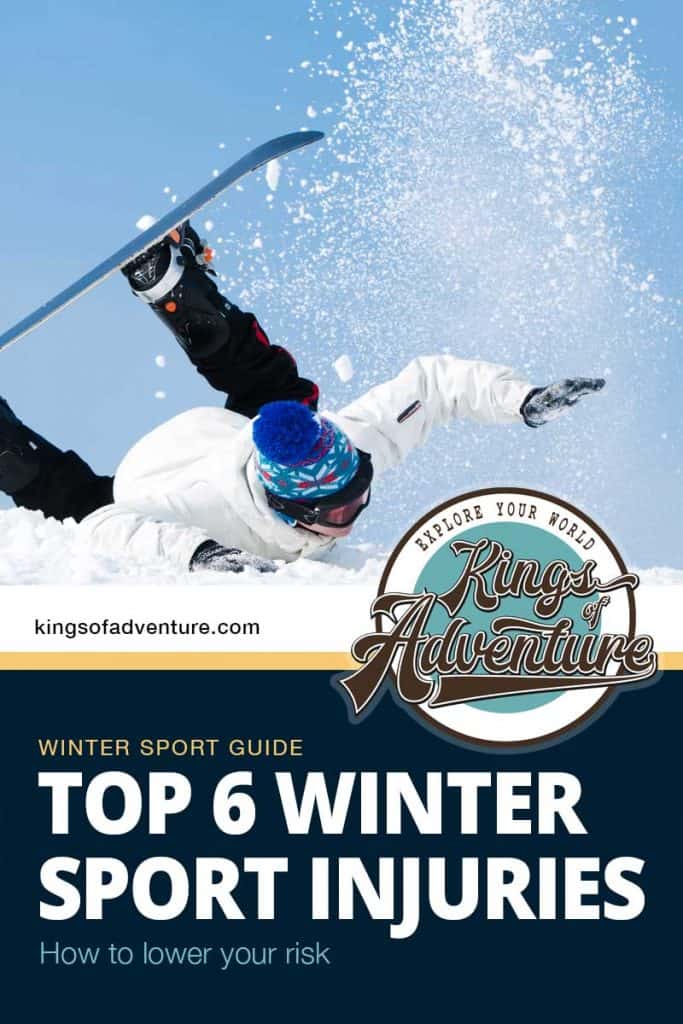Does the thought of spending time outdoors during the cold winter temperatures fill you with dread? Well, there are those who can’t wait for this season, just so they can start snowboarding, sledding, skiing and engaging in all those other winter sports. But while these activities are fun, they also present some risks of injury.
The good news is, a lot of winter sports injuries can be avoided by employing the right safety precautions and preparations. In the following post, we’ll be looking at 6 of the most common winter sports injuries and how to minimize risk.
Medial Collateral Ligament (MCL) Injuries
If you love to ski, statistics show that you have an elevated risk of suffering an MCL injury. The MCL is a band of tissue, which extends along the inner edge of your knee. It’s the main part that connects your shin and thigh bones and stabilizes your knee.
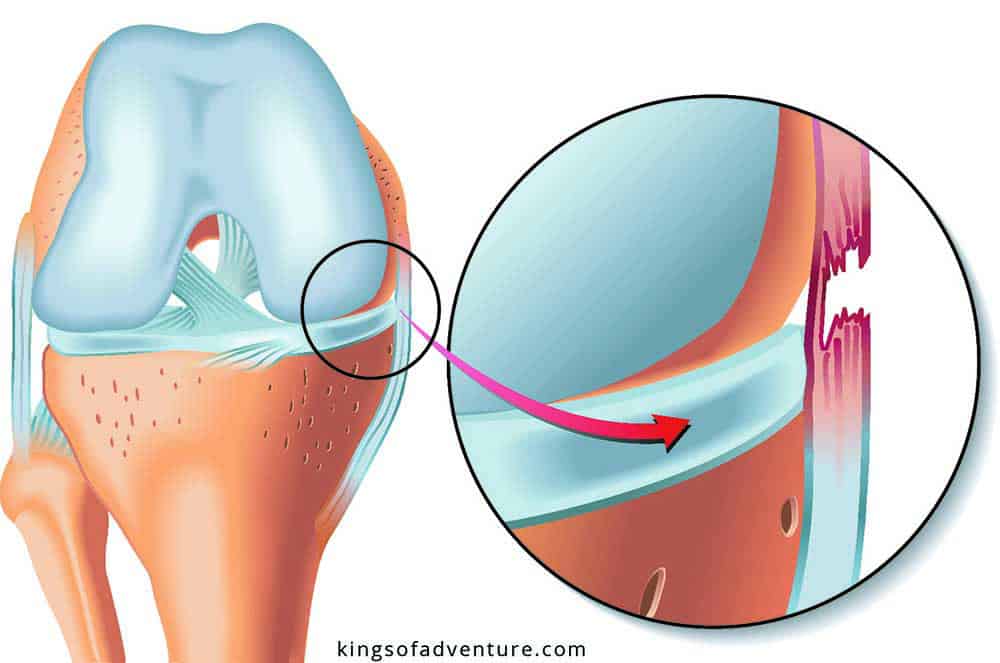
Skiers and snowboarders are prone to injuries of the MCL. This tear can also happen when you’re playing ice hockey or other impact sport, and get hit hard on the side of your knee. The most common signs that you have MCL injury are swelling and intense pain along the edge of the knee.
That said, it is possible to lower the risk of an MCL injury by incorporating balancing and strengthening exercises. Before you go skiing, consider performing this workout to improve your balance and strength of the surrounding muscle.
Wearing supportive gear has shown to provide some protection against MCL injuries. This entails investing in proper footwear and strapping on an extra layer of support such as knee pads or brace. Both of these assist in the stability of the knee.
Snowboarder’s ankle
A study by the American Family Physician revealed that ankle injuries make up 16.7% of snowboarding injuries, the second-highest after wrist injuries.
One particular ankle injury that is common among snowboarders is the snowboarder’s ankle. Scientifically referred to as lateral talus fracture, this is a break or fracture of the lateral process of the talus (LPT).
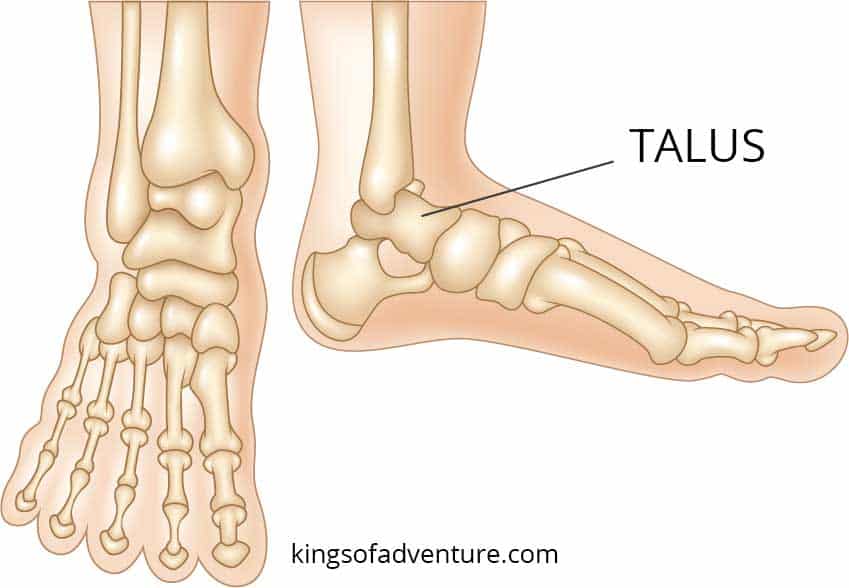
Although it sounds like a mouthful, the LPT is simply the tiny bone located on the exterior side of your ankle, slightly above the heel bone.
Often, this injury occurs when a snowboarder tries to land from a jump on an uneven surface. Taking this into account, it’s not surprising then that intermediate and advanced snowboarders are more likely to suffer this injury compared to beginners.
An easy way to prevent this injury is to incorporate a wobble board into your workout routine. Not only does it improve your ankle strength but it also boosts your range of motion. Essentially, it makes your ankle joint mobile and flexible.
Obviously investing in good quality snowboard boots is a no-brainer.
Head Injuries

Head injuries are more common among skiers and snowboarders than you think. In a research study led by Johns Hopkins, it was found that at least 600,000 injuries are reported each year among the 10 million Americans that ski or snowboard.
Head injuries make up 20% of this statistic. Even more surprising is the fact that 22% of these head-related injuries are severe enough to result in concussions or a loss of consciousness. Apart from snowboarders and skiers, head injuries are also common among sledders.
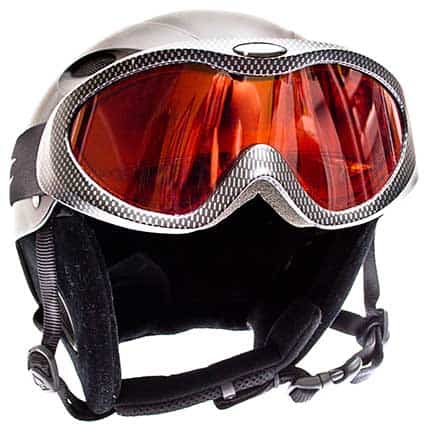
A majority of head injuries occur when an individual hits inanimate objects like trees, light posts or the ground.
And although traumatic head injuries among winter sports enthusiasts can be fatal, they’re equally easy to avoid. All you need to do is invest in a snowboarding or ski helmet.
Unfortunately, helmets are not compulsory gear for snowboarders and skiers in most US states.
It’s only in New Jersey where ski helmet use is mandatory, and even then, this law applies to people younger than 18.
Though the law doesn’t mandate you to wear a helmet, it’s in your best interest to do so when skiing or snowboarding. In addition to reducing risk of head injury, helmets:
- Keep snow out of your face and therefore improve your visibility and safety
- Keep your head warm, which is crucial when you’re skiing or snowboarding in very cold weather
- Help keep your goggles in place
Wrist Fracture
Falls are inevitable when you’re involved in action sports, but particularly when taking part in winter sports due to the slippery/icy surfaces. If you’re like most people, you usually stretch out your arms and hands to regain balance or to try to protect yourself as you crash to the ground. Often, this technique works. But when it doesn’t, it can lead to severe wrist injuries like fractures.
The most common wrist fractures experienced by snowboarders and skiers are:
- Extra-articular fracture- this break occurs above the wrist joint, meaning it does not extend into the actual joint.
- Intra-articular fracture- this fracture affects the wrist joint and the distal radius
- Comminuted fracture- this is when the bone is broken in multiple places
- Open fracture- is when a bone fracture punctures the skin, meaning it’s exposed externally
To prevent wrist fractures, you should consider wearing wrist guards when participating in winter sports. As this study shows, wrist guards mitigate the risk of hand, wrist and forearm injuries by up to 85%.
Experts also suggest that before you hit the slopes, learn the best way to fall. Since falling is a part of the learning process, the least you can do is learn how to do it safely to minimize pain and risk of injury.
You could also consider investing in some impact shorts. These come equipped with padded guards on the bum, hips, and thighs for added protection. Anyone who’s snowboarded can testify that repetitive falling onto your coccyx can be really painful.
Anterior Cruciate Ligament (ACL) Tear
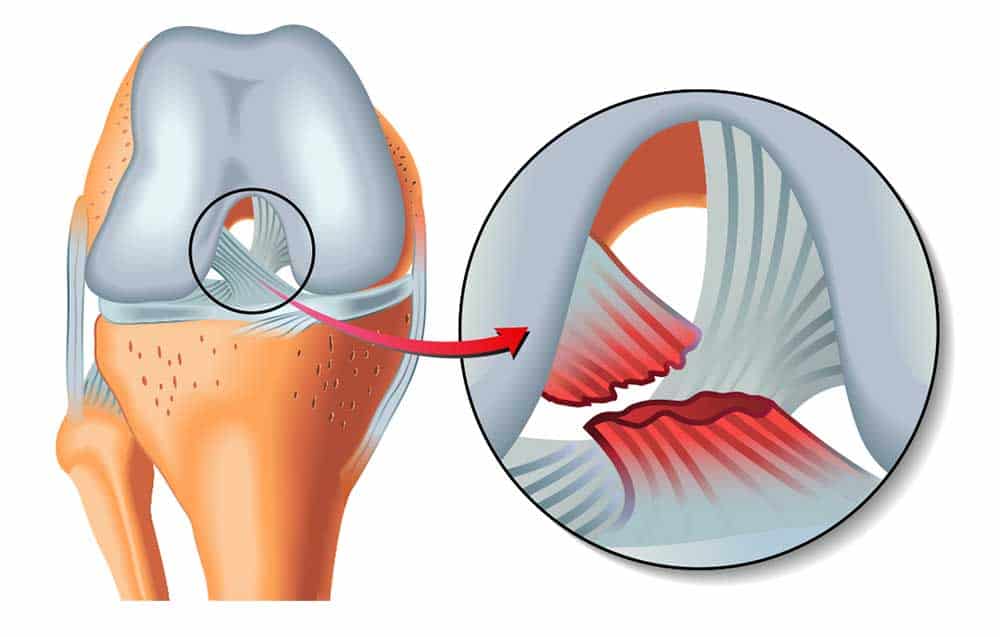
The ACL is one of the ligaments located inside your knee joint. It’s the part that connects the femur and tibia, and is responsible for maintaining a stable, but flexible knee.
ACL injuries occur when an unexpected twisting force is applied on the knee, forcing it to buckle. These are quite common among skiers, especially when they’re landing jumps or mogul skiing. They can also happen during falls if the snow bindings fail to release.
If your anterior cruciate ligament tears, you’ll definitely notice because you’ll hear an audible “pop” sound. This will be followed by brief but intense pain and swelling.
There are a couple of things you can do to mitigate ACL injuries. For one, you should go easy when skiing at the end of the day. Don’t choose difficult terrains or go speed skiing if you’re already feeling tired.
You should also check your snowboard bindings for release tension and adjust accordingly. Ideally, you should know your DIN, which is a measure of your bindings release tension.
If the bindings are set to DIN number 1, this means that they’ll release smoothly in case you encounter a problem. Bindings set to DIN number 15 (a competition-based setting) means they won’t release easily unless there’s a significant amount of force applied. If you’re not certain of the ideal DIN setting, consult a qualified snowboarding or ski technician.
Skier’s Thumb
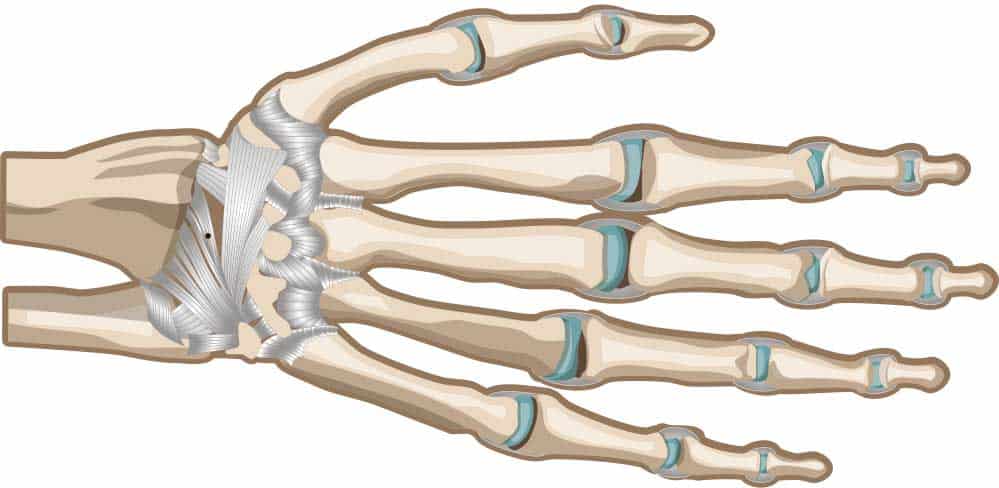
Also known as Gamekeeper’s thumb, this injury occurs on the soft tissues connecting the bones of your thumb. Skier’s thumb contributes to a considerable number of skiing injuries. In the worst cases, it causes a complete tearing of the ligament and has to be repaired surgically.
As you might have guessed, the condition was so named because it happens mostly during skiing accidents whereby the skier fails to let go of the ski pole. As a result, the thumb is forcefully bent backwards, tearing the ulnar collateral ligament or soft tissue.
If you experience this injury, you’re likely to feel pain at the base of your thumb. The thumb may also swell, making it difficult to grasp things between the thumb and index finger.
The easiest way to avoid this injury is to avoid falls when skiing. But since this is practically impossible for most skiers, it’s easier to learn how to let go of the ski pole during a fall. This way, even if you fall on an outstretched hand, the impact won’t be as severe as it would be if you were still holding onto the pole.
Also, consider wearing thumb splints or stabilizers. These will keep your ulnar collateral ligament protected without impeding hand movement and function.
Conclusion
A wide range of injuries can occur when you’re taking part in winter sports. Knee, wrist and head injuries are the most common amongst skiers, snowboarders and sledders.
Fortunately, there are several measures you can take to avoid becoming a victim. For one, use appropriate equipment designed for your sport. Wear protective gear if at all possible especially a helmet.
Secondly, hit the gym; preparing your muscles before the snow even falls is an effective way of minimizing risk of injury. Take up yoga, flexibility cannot be underestimated for its impact on your body’s ability mitigate injury. Lastly, learn the right technique and adhere to the rules related to your sport.
